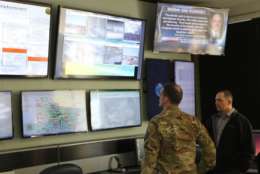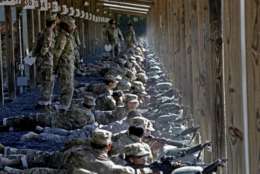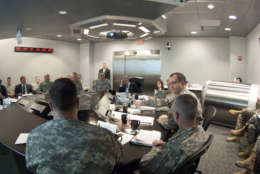Army
-
Army Futures Command only came about because of Sen. John McCain's insistence that the Army fix its modernization problems, service leaders said.
August 28, 2018 -
The new commander of Army Cyber Command is advocating for a rebranding, along with an expanded mission set that embraces information operations, intelligence.
August 28, 2018 -
As it seeks a new long-term strategy for its tactical networks, Army leaders say they're aiming to jumpstart the design process by beginning with commercial equipment that's already been proved by the military's special operations forces.
August 24, 2018 -
At a National Guard facility in southeastern Indiana, the Army is training cyber soldiers in ways that show them how their keystrokes impact the real world.
August 16, 2018 -
The Office of Management and Budget released its Cloud First strategy seven years ago. Now, under the Trump administration, OMB plans to soon release an updated Cloud Smart strategy.
August 16, 2018 -
After a lackluster first year in its Cyber Direct Commissioning program, the Army is hoping a combination of higher pay and better marketing will let it attract more candidates from industry, academia.
August 06, 2018 -
The new Army Futures Command is up and running in Austin. But realigning the service's modernization bureaucracy to operate in concert will take at least another year.
August 02, 2018 -
With a November industry day, the Army is planning a year of pilots to test "smart city" technologies on its bases.
July 09, 2018 -
Special hiring authorities for personnel working in government-owned depots are set to expire in September.
July 04, 2018 -
As the Army shifts its focus from violent extremist organizations to near-peer adversaries per the national defense strategy, staying on top of emerging domains and technologies will be what keeps it in a position of dominance going into the future.
June 25, 2018 -
In today's Federal Newscast, the House Oversight and Government Reform Committee releases the expanded Federal IT Acquisition Reform Act report card today, five agencies saw their grades go up, 11 saw them go down.
May 23, 2018 -
The Army is looking at new steps to boost military spouse employment, potentially including new authorities to hire them as civilian employees.
May 22, 2018 -
Federal law enforcement agencies collect troves of data, but in the digital age, they're looking to make sense of more data in less time, in order to stay one step of their criminals they're looking to catch.
May 09, 2018 -
The Army’s new framework for a rapid process to acquire cyber defensive tools is a good example of how DoD acquisition systems are about providing the warfighters as much capability as possible.
April 18, 2018 -
The Army believes it now has a workable strategy to buy cyber capabilities within 30 days, but it started by fixing its budgeting and requirements processes.
April 05, 2018















